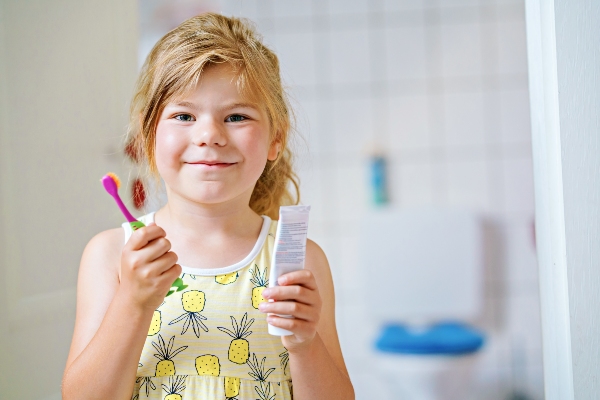 Even with healthy oral habits, children can find themselves in need of dental restoration. Tooth-colored fillings allow pediatric dentists to provide their patients with aesthetically pleasing results. Here are some details on choosing this restorative option to repair dental cavities.
Even with healthy oral habits, children can find themselves in need of dental restoration. Tooth-colored fillings allow pediatric dentists to provide their patients with aesthetically pleasing results. Here are some details on choosing this restorative option to repair dental cavities.
What are tooth-colored fillings?
Today, patients want teeth to look natural when laughing or smiling, as this can affect their self-esteem. This is why tooth-colored fillings, often made from composite resin, are popular. They consist of durable plastics and glass. Parents may want to request these fillings if the child has a cavity close to the front of their mouth.
What to expect during the composite fillings process
Composite fillings normally require only one tooth preparation and restoration visit. This is because this material bonds well with natural teeth; therefore, the dentist removes less (or none) of the healthy portion of the natural tooth than with some of the alternative materials.
The dentist will first choose a shade of composite that matches the rest of the child's natural teeth. Then, they will numb the tooth and surrounding area to prevent the child from feeling discomfort during the procedure. The dentist will subsequently drill into the tooth enamel and extract the decayed part of the tooth.
When the tooth is ready for the filling, the dentist will etch and bond the tooth before layering the composite resin material into the hollow portion of the tooth. To set each coating, the dentist cures them with a special light. Once the filling has cured, the dentist will shape, contour, and polish the tooth. The last task is to check the bite for comfort and alignment. If discomfort or misalignments occur when biting, the dentist can adjust by further shaving or contouring the tooth.
Following the procedure, patients may experience sensitivity to cold or hot for up to a week. If the issue continues beyond that timeframe, call our office so that we may advise.
Are there alternatives to composites for tooth-colored fillings?
Composite fillings are the most commonly-used tooth-colored fillings, but they are not the only option. For example, suppose the area needing restoration is large or is relied upon heavily for chewing (like the back teeth). In that case, the dentist may recommend a different material for the procedure.
White fillings can be more costly than other options. However, most parents feel the additional cost is worthwhile to help their child achieve a natural look. In addition, the fillings need to be replaced periodically. As the edge of a filling breaks away from the tooth, bacteria can grow between the two and cause decay. Be sure to visit your dentist regularly to have the restoration checked for issues.
Schedule your child’s next appointment
Tooth-colored fillings provide patients with an aesthetically pleasing option for dental restoration. If you believe your child has a cavity, chip, or crack in their teeth, contact us today. We can answer any questions you may have and schedule your child an appointment with our pediatric dentist to determine an effective treatment plan.
Request an appointment or call Grand Parkway Pediatric Dental at 832-579-0960 for an appointment in our Richmond office.
Recent Posts
Dental fillings for kids are crucial in preventing many dental issues. Baby teeth can develop cavities. Correcting this problem is important for developing permanent teeth. Here are the details on how preventive dentistry uses dental fillings for kids.Research shows that many school-age kids suffer from cavities. This disease is common even if it is preventable.…
Dental fillings for kids are one of the most common treatments for tooth decay in children. The earlier tooth decay is detected in a child’s tooth, the easier it is to treat. Let us examine why treating childhood tooth decay is crucial and how a pediatric dentist treats it.According to the Centers for Disease Control…
Dental fillings for kids can be nerve-wracking for some kids, likely due to the necessary tools. While we aim to make this simple process as smooth and painless as possible, we need your help. Getting a firm grasp on what your kids can expect during this procedure and how to prevent a future need for…


